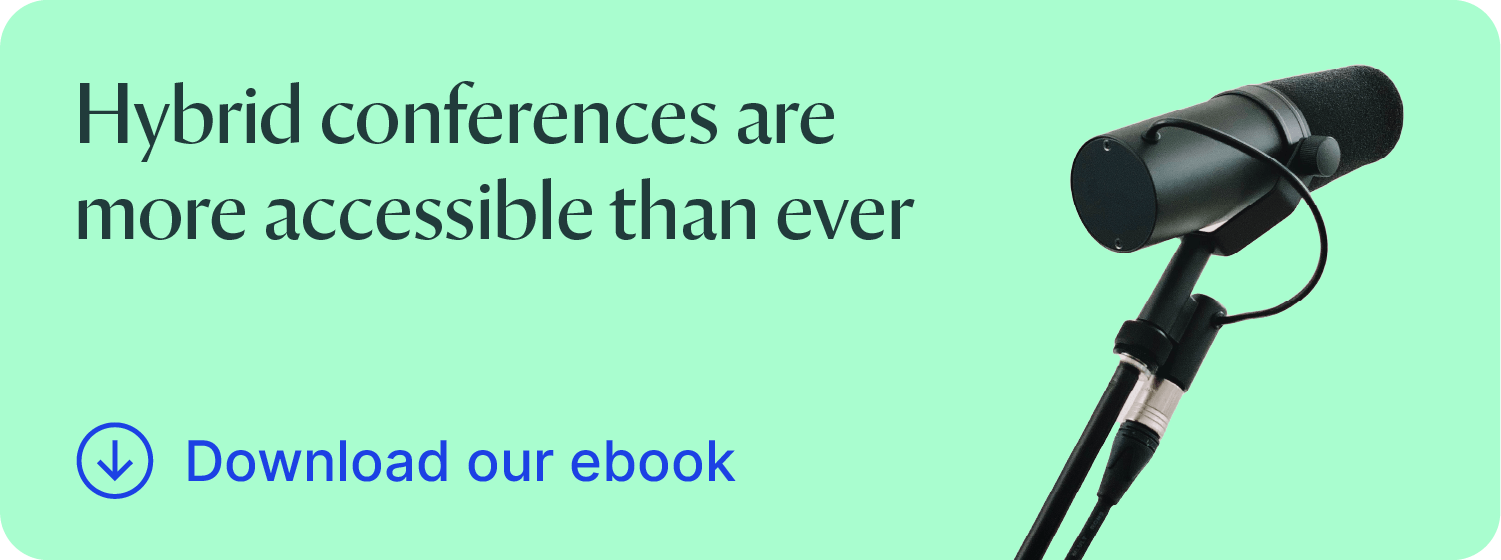[ RESEARCH COMMUNITY ] December 14, 2017
Expert interview: Conference trends to watch in 2018
In an interview with Morressier, Ben Hainsworth talks the latest conference tech trends, the rise of initiated conferences and the last stand-out event he attended.

It would be hard to find someone with a more illustrious career in the conference and meetings industry than Ben Hainsworth. After spending twenty years working his way up the ladder at the European Society of Cardiology to become the director of all meetings and congresses, he recently decided to turn his focus to the commercial side of meetings. He is now the Executive Director of K.I.T Group GmbH, one of the world’s largest PCOs. In an interview with Morressier he talks about the latest conference tech trends, the rise of initiated conferences, and what it takes for an event to really stand out for him.
Morressier: What do you see as the biggest trends in conferences coming up in 2018?
Ben Hainsworth: A general trend is that people are becoming much more demanding in terms of what they get for their time or money, in part because attendees are increasingly paying their own way. A lot of the traditional conference formats, such as a lecture room with six middle-aged people sitting on a stage, don’t really work for younger generations anymore. They are more interested in being heard than listening. So events or formats that enhance the ability for attendees to be heard and get involved are on the rise.Additionally, associations are now only using events as one part of their strategy. Conferences are no longer an end in themselves. Today, they are part of an education or networking strategy. This includes sharing content that isn’t limited to the conference. Making content available online both before and after the conference gets discussions going and enhances the interaction at the actual conference while also increasing its longevity.
Morressier: What are some of the ways conferences are increasing interactivity at events?
Hainsworth: I think the whole concept of eposters is one great way, they are far more interactive than a session on stage and are more dynamic that a paper poster – they are more likely to get a conversation going.Technology in general plays a big role in increasing interactivity. Posters are giving way to eposters, printed programs are giving way to apps, congress bags are disappearing and giving way to virtual mailboxes. It’s a combination of tech-supported formats and traditional networking. Now there are apps that match delegates with similar interests so that they can meet in person. It’s a good example of technology facilitating what is ultimately a conversation between two people.
Morressier: Do you think there will be a move away from larger conferences and towards smaller meetings in the future?
Hainsworth: People have been saying this for a long time, but ultimately the name and brand of these mega events still lure in delegates. The challenge for larger conferences is to replicate the human aspect you get at smaller ones.
Morressier: Explain how initiated conferences work and how you see them developing in the future?
Hainsworth: An example of how they can work is when convention bureaus around the world work with their local government to set up events that compliment their city. For example, a city might have a booming table manufacturing industry. To stimulate interest and research into the table industry, they might decide to develop and fund a conference around this topic. That’s just one way an initiated conference can be formed.Initiated conferences are supported by the concept of legacy, which refers to the positive impact a conference can have on the host city, whether that’s in healthcare, education or some other way. To give you one example, at a paediatrics conference that we run we include an offsite where we invite local children with diabetes to meet the doctors so they can talk about how to better manage their diabetes.
Morressier: Name a conference that you recently attended that really impressed you. What made it stand out?
Hainsworth: The PCMA Convening Leaders in Vancouver in 2015 really stood out. I got the impression that the organizers had taken all the traditional building blocks of an event, thrown some out, thrown some new ones in, reshuffled the lot and put it all back together in an almost unrecognizable configuration. The most striking move was away from lecture rooms with walls, doors, stage, lectern and seats in rows. Instead, you could almost stumble into and out of, interesting discussions without deliberately looking for them or even being aware of them in the program. Ultimately, I don’t think that everything worked, but there were so many new and daring elements that it just made you think ‘what if...’. I think it had the same lasting effect on everybody who attended.
